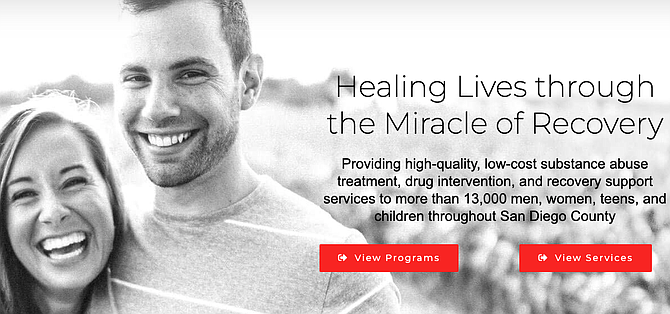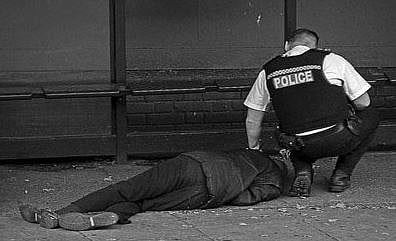 Facebook
Facebook
 X
X
 Instagram
Instagram
 TikTok
TikTok
 Youtube
Youtube

A program deemed cutting edge when it began in 2000 is still around — and so is a name some consider outdated: the Serial Inebriate Program.
Serving mainly the unhoused whose alcohol-related issues land them repeatedly in emergency rooms and jail, the program offers treatment as an alternative. But as healthcare groups and others contend, words matter.

The term inebriate was coined in the 14th century. Today, "person-first language" is being used to avoid the labels that can keep people from seeking treatment for what is now called alcohol use disorder, a term established by the American Psychiatric Association in 2013.
"Serial Inebriate was coined by the judge that implemented the program," Cinthia Castillon, the program manager, says in an email. "It was because when SIP first came to fruition it was designed for people that had high occurrences of drunk in publics, which at the time was known as serial inebriates."
Today, it is what it was. The name stuck.
The program still serves those who've been sent to four-hour sobering services more than four times in a 12-month period, with the goal of keeping people from using costly emergency room services.
As the city describes the process, a person is "found down" and 911 is called. Often, it's the same person who keeps needing transport to the "Inebriate Reception Center" at the McAlister Institute on India Street, which a receptionist says is the city's only sobering location. People are typically brought there directly by health or law enforcement agencies, but since the center isn't a medical detox, some clients would require a trip to the hospital first.

The minimum stay at the institute's Recovery and Bridge Center is four hours, based on the person's needs. Once sober, they receive counseling and are connected to other services, including help finding transitional housing and substance use treatment.
All the while, the SIP clock is ticking. After five trips to the center within 30 days, the person, now deemed a "chronic inebriate," is rejected for the sobering center and taken to jail instead where the program is offered in lieu of custody time. If they agree to participate, they can access city-sponsored housing and six months of treatment.
The program is lauded as a successful collaboration of city and county, hospitals, law enforcement and the courts. It has an annual budget of $2 million. In 2008, it won a state award for "reducing the use of public resources by chronic alcoholics" and it has spread to other cities and states.
But is it time to come up with a new name?
Stacey Tovino, a professor of law at the University of Oklahoma who studies how language used in law and healthcare stigmatizes those with alcohol use disorder, thinks it is, and she had a few ideas.
"Perhaps something medically accurate and current," she suggested, offering as possibilities the Alcohol Use Disorder Program, the Alcohol Use Disorder Diversion Program and the Alcohol Use Disorder Treatment Program.
"Or, maybe even something that doesn't mention alcohol at all like the Program for Hope."


A program deemed cutting edge when it began in 2000 is still around — and so is a name some consider outdated: the Serial Inebriate Program.
Serving mainly the unhoused whose alcohol-related issues land them repeatedly in emergency rooms and jail, the program offers treatment as an alternative. But as healthcare groups and others contend, words matter.

The term inebriate was coined in the 14th century. Today, "person-first language" is being used to avoid the labels that can keep people from seeking treatment for what is now called alcohol use disorder, a term established by the American Psychiatric Association in 2013.
"Serial Inebriate was coined by the judge that implemented the program," Cinthia Castillon, the program manager, says in an email. "It was because when SIP first came to fruition it was designed for people that had high occurrences of drunk in publics, which at the time was known as serial inebriates."
Today, it is what it was. The name stuck.
The program still serves those who've been sent to four-hour sobering services more than four times in a 12-month period, with the goal of keeping people from using costly emergency room services.
As the city describes the process, a person is "found down" and 911 is called. Often, it's the same person who keeps needing transport to the "Inebriate Reception Center" at the McAlister Institute on India Street, which a receptionist says is the city's only sobering location. People are typically brought there directly by health or law enforcement agencies, but since the center isn't a medical detox, some clients would require a trip to the hospital first.

The minimum stay at the institute's Recovery and Bridge Center is four hours, based on the person's needs. Once sober, they receive counseling and are connected to other services, including help finding transitional housing and substance use treatment.
All the while, the SIP clock is ticking. After five trips to the center within 30 days, the person, now deemed a "chronic inebriate," is rejected for the sobering center and taken to jail instead where the program is offered in lieu of custody time. If they agree to participate, they can access city-sponsored housing and six months of treatment.
The program is lauded as a successful collaboration of city and county, hospitals, law enforcement and the courts. It has an annual budget of $2 million. In 2008, it won a state award for "reducing the use of public resources by chronic alcoholics" and it has spread to other cities and states.
But is it time to come up with a new name?
Stacey Tovino, a professor of law at the University of Oklahoma who studies how language used in law and healthcare stigmatizes those with alcohol use disorder, thinks it is, and she had a few ideas.
"Perhaps something medically accurate and current," she suggested, offering as possibilities the Alcohol Use Disorder Program, the Alcohol Use Disorder Diversion Program and the Alcohol Use Disorder Treatment Program.
"Or, maybe even something that doesn't mention alcohol at all like the Program for Hope."
Comments